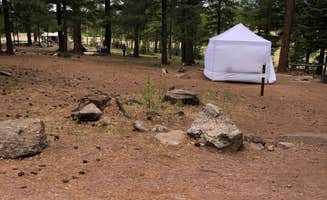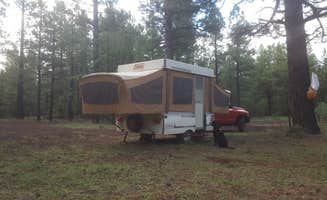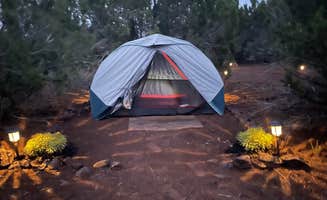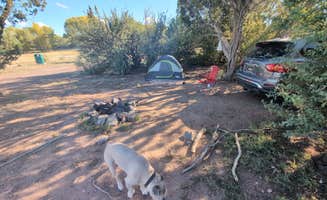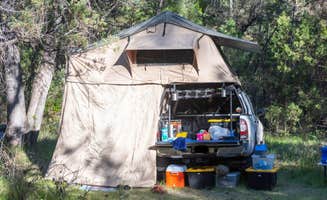Dispersed camping opportunities abound near Greer, Arizona, where the elevation ranges from 8,000 to 9,500 feet in the surrounding Apache-Sitgreaves National Forest. Temperature swings can exceed 30 degrees between day and night, even during summer months. Forest Service Road 249 provides access to multiple primitive campsites near Government Springs Trailhead, though vehicle clearance requirements increase further from main roads.
What to do
Fishing at multiple elevations: The area offers varied fishing experiences across several alpine lakes. The Hulsey Lake Fishing Site provides excellent catch prospects with one visitor noting, "Always great fishing here. There is NO camping here. I repeat, NO CAMPING. But plenty of dispersed to be found up the road further all the way to Terry Flat."
Wildlife observation: Dawn and dusk provide optimal viewing times for deer, elk and various bird species. Shush Bezahze campground on the Apache Reservation offers "wildlife" opportunities while remaining "close to town but far enough that it feels like your way out."
Hiking access: Several tent-friendly sites connect directly to forest trails. At Cutthroat, campers can access lakeside trails from their sites, though some require preparation as "you have to hike your stuff up a small hill from the car."
What campers like
Weather relief: The higher elevation camping areas provide respite from summer desert heat. Reservation Lake campground is described as an "awesome summer retreat for cooler weather," though campers should note that "monsoon season is late June-August and that means rain almost every day."
Lake proximity: Many tent sites offer direct water access. According to a Cutthroat visitor, "This campsite is perfect for tent campers looking to be close to the lake. Sites are more private that brookchar (next site over) but only have vaulted toilets, no running water in bathrooms."
Tree diversity: Unlike lower-elevation Arizona camping, the Greer area features mixed conifer forests. Beehive Spring Camp provides "a variety of trees not just Ponderosa Pine," creating varied shade patterns throughout the day.
What you should know
Elevation challenges: Nighttime temperatures drop significantly year-round due to the high elevation. At Beehive Spring Camp, situated at 9,200 feet, campers should prepare for temperature variations as "got cold at night in September."
Water availability: Most dispersed sites require bringing all water needs. Developed sites like Cutthroat have designated areas to collect drinking water, but no running water in restroom facilities.
Road conditions: Forest service roads deteriorate with distance from main highways. Some campgrounds have restricted vehicle access periods based on seasonal conditions, especially during monsoon season and early spring snowmelt.
Site selection: Terrain varies significantly between sites. At Cutthroat campground, "Not all spots are level, but the views are great," requiring campers to bring leveling equipment for sleeping comfort.
Tips for camping with families
Campground layout considerations: Families should select sites with short distances between parking and tent areas. At Cutthroat, "There is designated parking for each spot, but you might have to hike a little ways to your site," which can challenge families with young children or extensive gear.
Restroom access: Plan site selection around toilet facilities when camping with children. Reservation Lake campground offers toilets that are "quiet and clean" while providing "excellent scenery" for family exploration.
Local respect guidelines: Teach children about area-specific rules, especially when passing through residential zones to reach camping areas. Near Hulsey Lake, campers are advised: "There is housing when coming off the highway. Be respectful and don't drive 45 down the road. Take your time and take it in."
Tips from RVers
Site identification: RVers should scout tent-only areas before arrival. Some locations marked as campgrounds are actually not suitable for overnight stays, such as Elderberry Spring, which one visitor clarified is "not a campground, but a spot to pull off the road when logging trucks are coming up."
Noise considerations: Industrial activity occurs in certain forest areas. At Beehive Spring Camp, "Logging tucks noisy during the day" can disrupt daytime camping experiences, making this location better for those planning full-day activities away from camp.
Boondocking opportunities: Self-contained units find numerous options throughout the forest. Sharon F. describes Shush Bezahze as "Boondocking at its finest! Quiet, large campground, easy access to lake," making it suitable for tent campers seeking a more remote experience.


